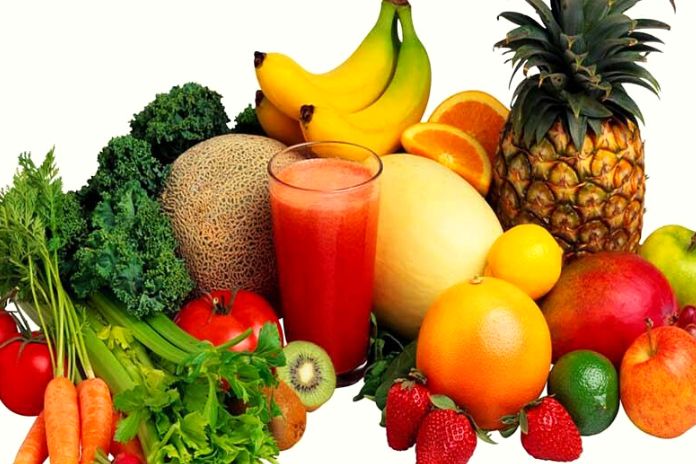Follow this advice for healthier eating. Everyone knows that a plate full of colorful fruits and vegetables is good for health and weight loss. But sometimes, learning is not enough. If you’re tired of making carrot and leafy green salads or buying the good, traditional apple for a snack, take advantage of the fact that most fresh fruits and vegetables have zero points and try these tips.
Use The Barbecue/Grill
These natural foods will be delicious in a few minutes!
- Serve grilled peach and pineapple chunks alongside the meat.
- Grill skewers of bell pepper, chicken, pineapple, and whole mushrooms.
- Place beets and green beans on the grill or top of a sheet of foil and grill. Mix the vegetables and top with grated Parmesan cheese or crumbled mines.
Freeze The Food
Store fresh fruit in the freezer to preserve flavor and nutrients. So you will always have a refreshing dessert or snack option.
- Place the loose grapes in a single layer on a tray before freezing. Other great options are blackberries, cherries (without the pit), and bananas (without the skin).
- Mix frozen strawberries with low-fat plain yogurt.
- Make a frozen fruit smoothie (grapes, peaches, melon) with low-fat yogurt and cinnamon.
Slow cooking intensifies the flavor and let the natural sugar in the ingredients caramelize when roasting the vegetables in the oven. Spray oil on them and grill them on high power (200°C) for 30−45 minutes. Here are some great options:
- Carrot pieces with sweet potato.
- Eggplant, which can be enjoyed grilled or as a spread, is delicious over pasta or as a filling in a sandwich.
- Artichoke further accentuates its unique flavor in a light dish.
Give Preference To Dishes That Do Not Go To The Fire
To taste straight from the orchard or vegetable garden, combine raw foods into a salad or side dish. This way, you preserve the properties of nutrient-dense foods, especially vegetables rich in vitamin C and other water-soluble vitamins.
- Arrange melon and mango slices on a bed of arugula.
- Make a healthy version of Waldorf salad: mix chopped celery, apple, grapes, and a few walnuts, and top with low-fat plain yogurt in place of mayonnaise.
- Rub the kale with olive oil and lemon juice and marinate for 5−10 minutes. Sprinkle with sunflower seeds and serve as a side dish.
Learn More About Food Colors And Their Nutrients
The secret to a healthier life is the right food choices. But did you know that the more colorful the dish, the more different nutrients you consume? And can the pigments that give color to fruits and vegetables also benefit the body? The color of food is determined by the presence of specific substances in its composition. Called bioactive substances, the pigments that give each food its characteristic color (green, red, orange, purple, white, brown) also bring as many health benefits as vitamins and minerals.
They may have antioxidant, anti-inflammatory, anti-premature aging, and disease prevention properties such as flu, anemia, and cancer. The primary pigments present in foods are carotenoids (give the red-orange color), anthocyanins (give the purplish color), chlorophyll (provide the green color), and anthoxanthins (give the white or yellow tint). Each of these substances has specific properties that, combined with the other nutrients in the food, bring numerous health benefits.
Reds, Yellows, And Oranges
Foods that have carotenoid pigments are called lycopene and beta-carotene. Lycopene can be found in tomatoes, watermelons, and guavas. Beta-carotene can be found in papaya, squash, carrots, and mangoes. Both have antioxidant properties; they fight the damage caused by the so-called free radicals, molecules that bind to cells, produced mainly by alcohol and cigarette consumption, pollution, and stress.
They also help prevent diseases such as breast cancer, prostate cancer, and arteriosclerosis and fight premature aging. Food sources of carotenoids are also sources of vitamins A and C. Vitamin A improves vision and contributes to skin health. On the other hand, Vitamin C helps prevent colds and flu and increases the absorption of iron by the body, fighting anemia.
Purplish
Foods are rich in anthocyanins, pigments that give food a bluish or purplish color. The primary sources of anthocyanins are grapes, blackberries, blueberries, figs, plums, raspberries, acai berries, red cabbage, beets, and red onions. As an antioxidant substance, it helps to fight premature aging and cardiovascular diseases and helps to reduce blood cholesterol levels. These foods also contain vitamin B3, which contributes to the proper functioning of the digestive and kidney systems.
Greens
Chlorophyll is responsible for the green color of most vegetables. Mainly present in leaves such as cabbage, spinach, bertha, watercress, broccoli, and arugula, it has excellent antioxidant and anti-inflammatory potential, preventing arteriosclerosis and cardiovascular diseases, and assisting in the proper functioning of the immune system, improving the body’s defenses. Body.
In addition, dark green leaves are also sources of folic acid. This vital substance participates in various functions in the body such as good brain health, formation of the neurological system in the fetus, strengthening the immune system, and preventing heart disease. . These foods are also sources of fiber, which contribute to the proper functioning of the intestine.
Whites And Yellows
Present in white, beige, or yellow foods, such as potatoes, bananas, cauliflower, peas, garlic, onions, mushrooms, cassava, and yams, anthoxanthins are antioxidant substances that fight some types of cancer and help reduce cholesterol. Foods that have anthoxanthin as a pigment are also sources of B vitamins, allowing the nervous system to function correctly and helping to produce energy, fighting fatigue and improving mood.
Brown
They are usually foods rich in fiber, good fats, and B vitamins, in addition to vitamin E, such as whole grains (rice, wheat, oats), nuts, and chestnuts. They improve the intestine’s functioning and fight premature aging and cardiovascular diseases.
Also Read: THE POWER OF HABIT IN THE FOOD REEDUCATION PROCESS

